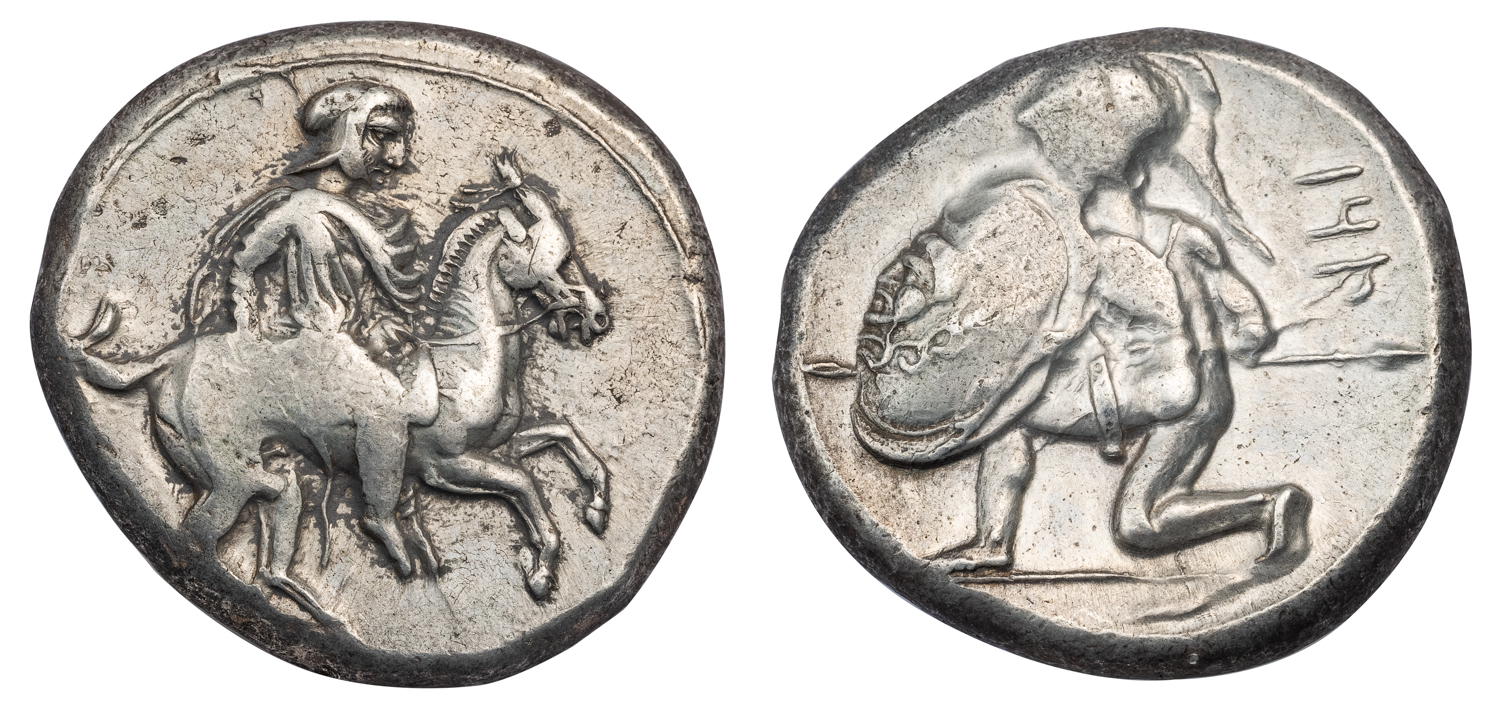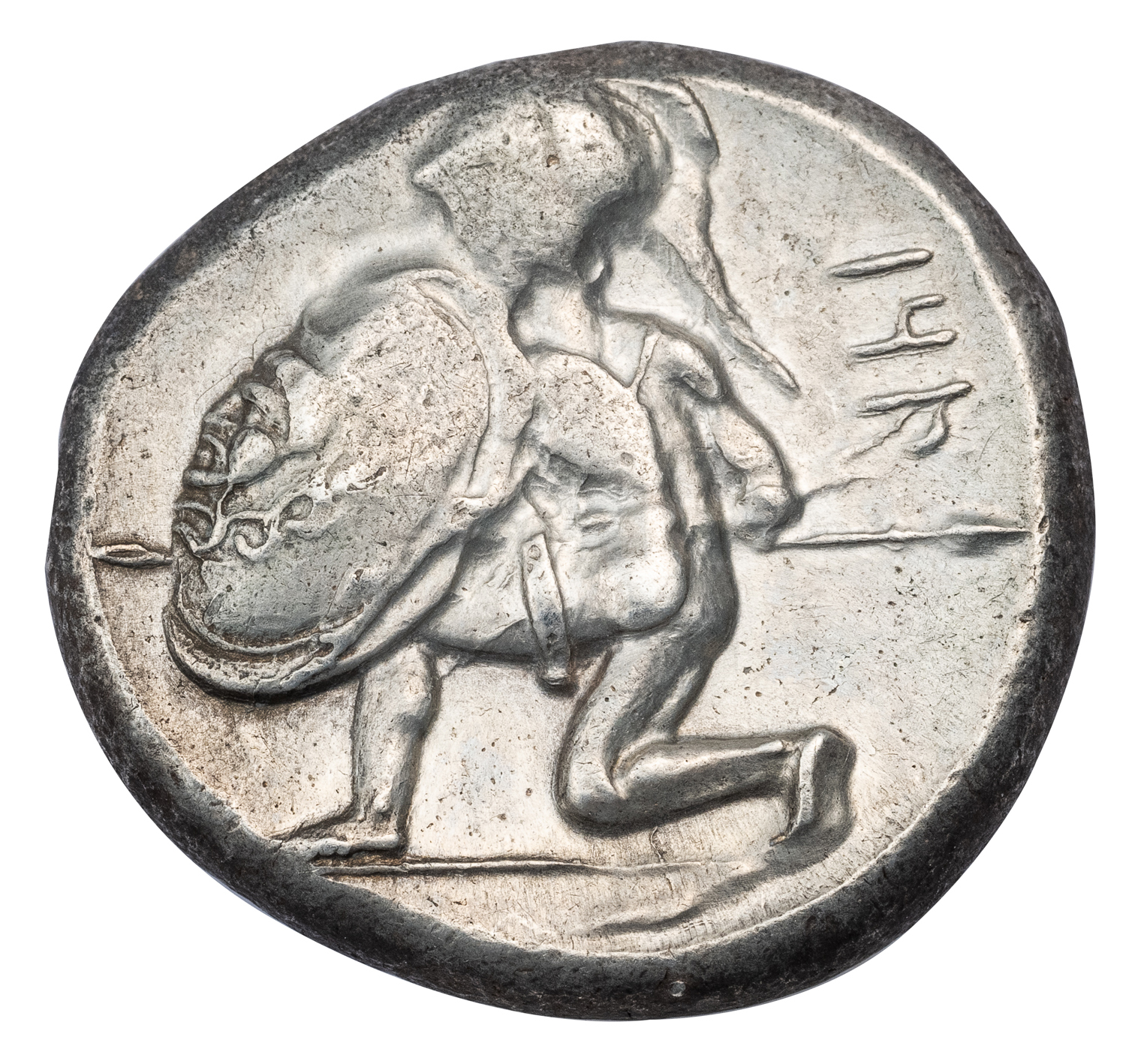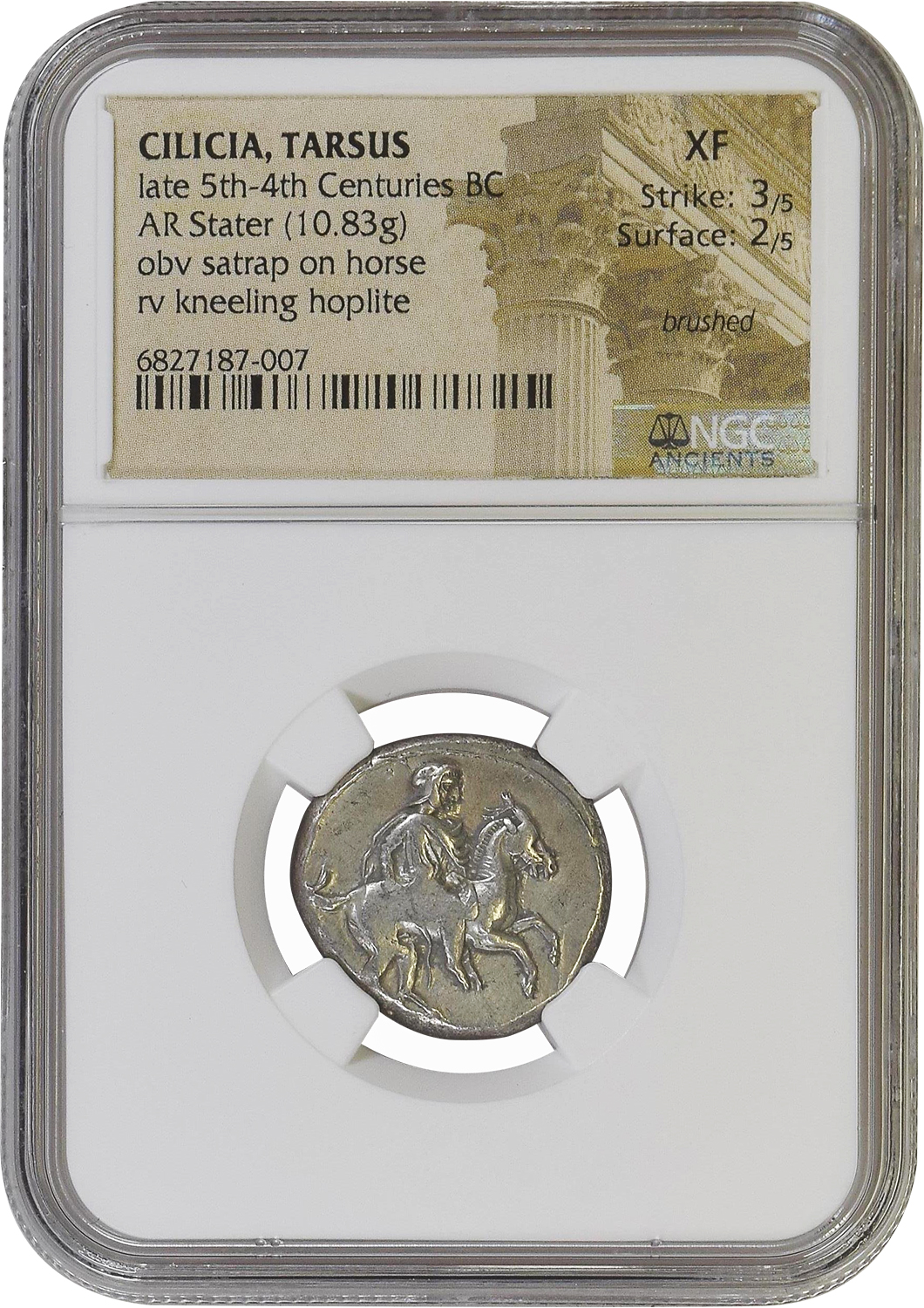TARSUS SILVER STATER – SATRAP AND HOPLITE TYPE – XF NGC GRADED GREEK CILICIA COIN (Inv. 18882)
$975.00
18882. CILICIA. TARSUS. Late 5th–4th centuries BC.
Silver Stater, 10.83 g, 21 mm.
Obv. Satrap riding horse right. Rev. Greek hoplite, nude but wearing helmet, kneeling left, raising shield with Gorgon emblem, and holding spear.
Casabonne Type F10.
NGC graded XF, Strike 3/5, Surface 2/5, “brushed.”
This Tarsian stater represents the two critical elements in the administration of the Achaemenid Persian Empire. The mounted figure on the obverse represents the satrap (provincial governor), usually a Persian noble with connections to the royal family who was appointed by the Great King to govern a specific satrapy (province) of the empire. The will of the satrap, who served essentially as a viceroy with quasi–royal powers within his satrapy, was enforced by an army, which was commonly composed of hardened Greek mercenary hoplites, such as the warrior depicted on the reverse. Poverty in mainland Greece and the great upheavals caused by the Peloponnesian War (431–404 BC) caused many Greeks to take up their weapons and seek a better life by fighting for pay in the armies of the Great King’s satraps. This coin may very well represent money used to pay Greek mercenaries for their services to the Persian satrap of Cilicia using types depicting the paymaster on the obverse and the intended recipient on the reverse.
The early fourth century BC, when this coin was probably struck, was the dawn new age in which increasingly independent satraps began to use their Greek mercenary armies in conflicts with each other and to undermine the central authority of the Great King himself. This development is exemplified by the famous Ten Thousand Greek mercenaries who served under Cyrus the Younger in a failed attempt to dethrone Artaxerxes II in 401 BC and were forced to march back to their homes under the leadership of Xenophon. Interestingly, it was this civil war that saw the end of the subject dynasty of native Cilician kings at Tarsus and the creation of Cilicia as a Persian satrapy.




